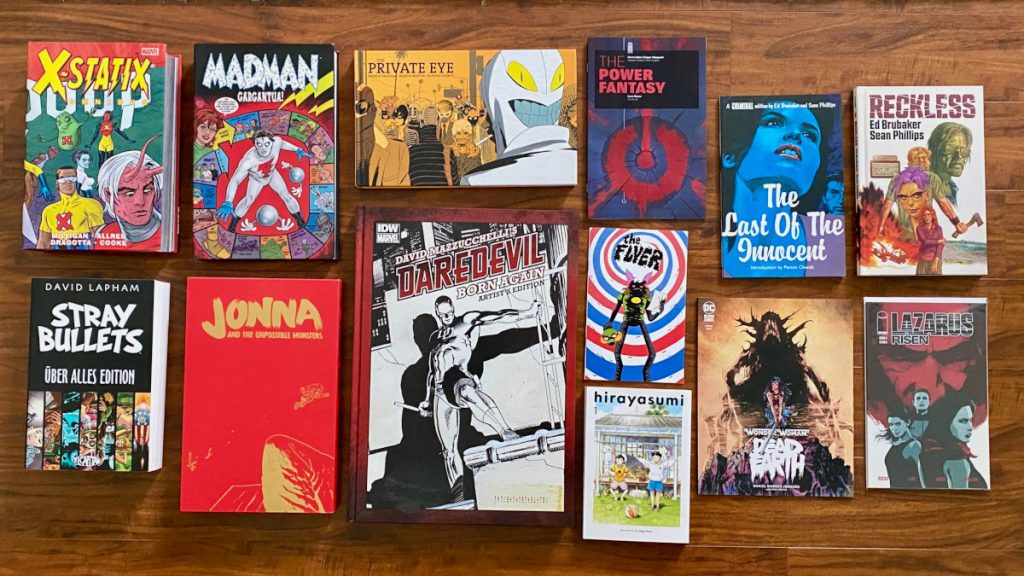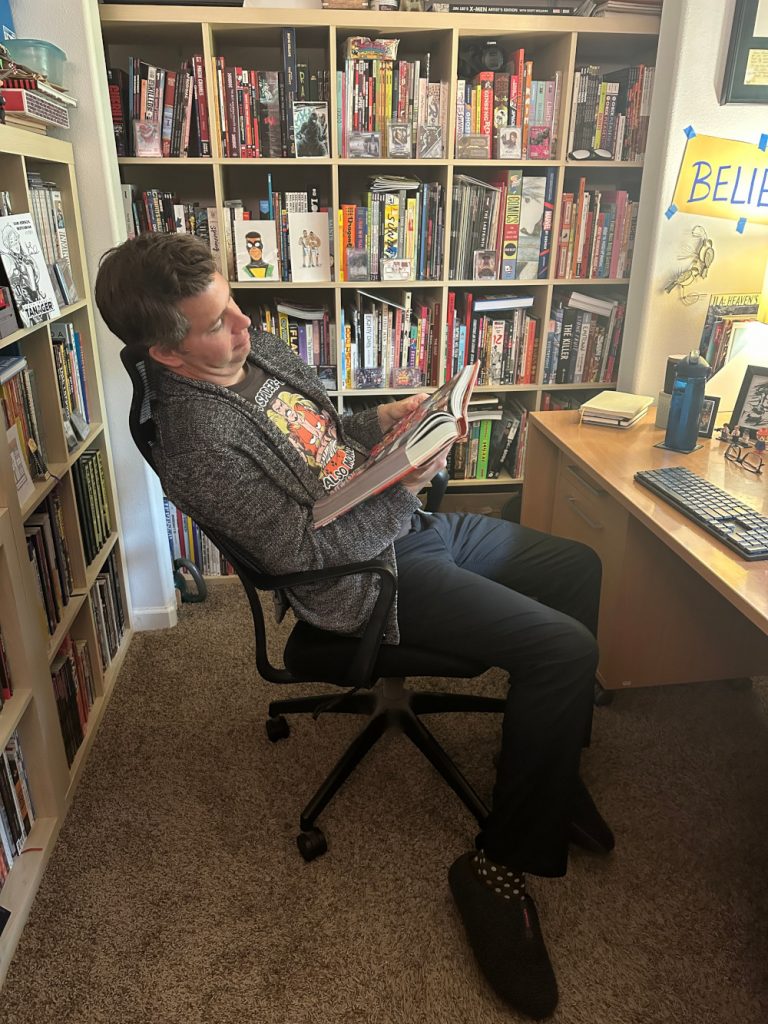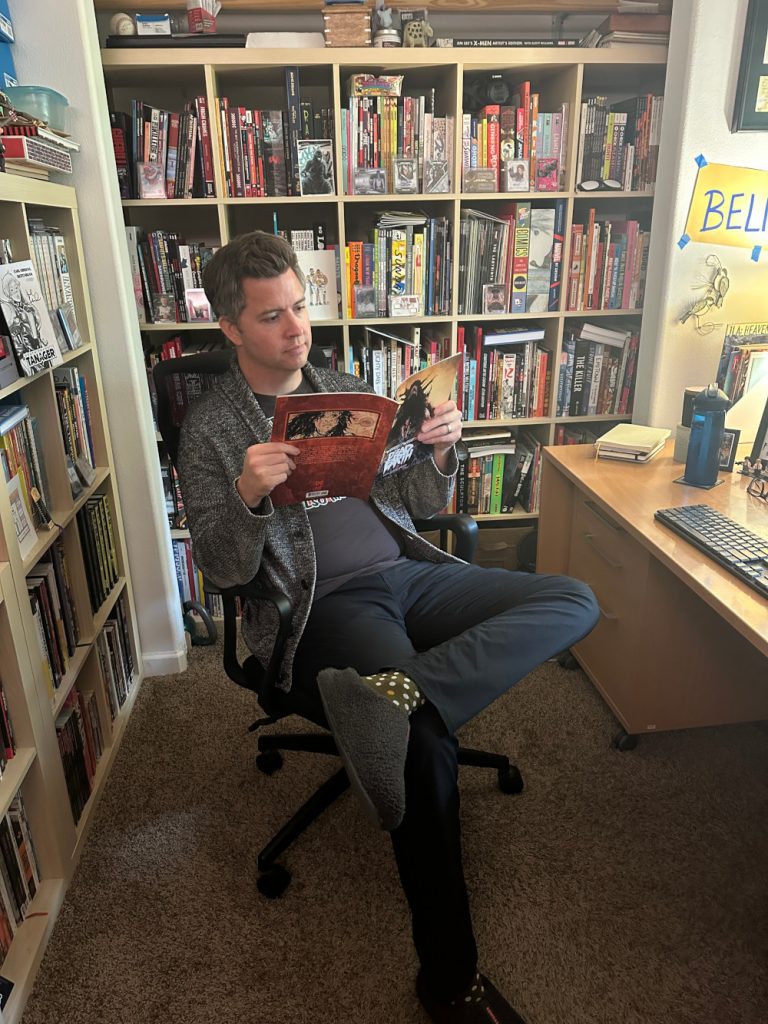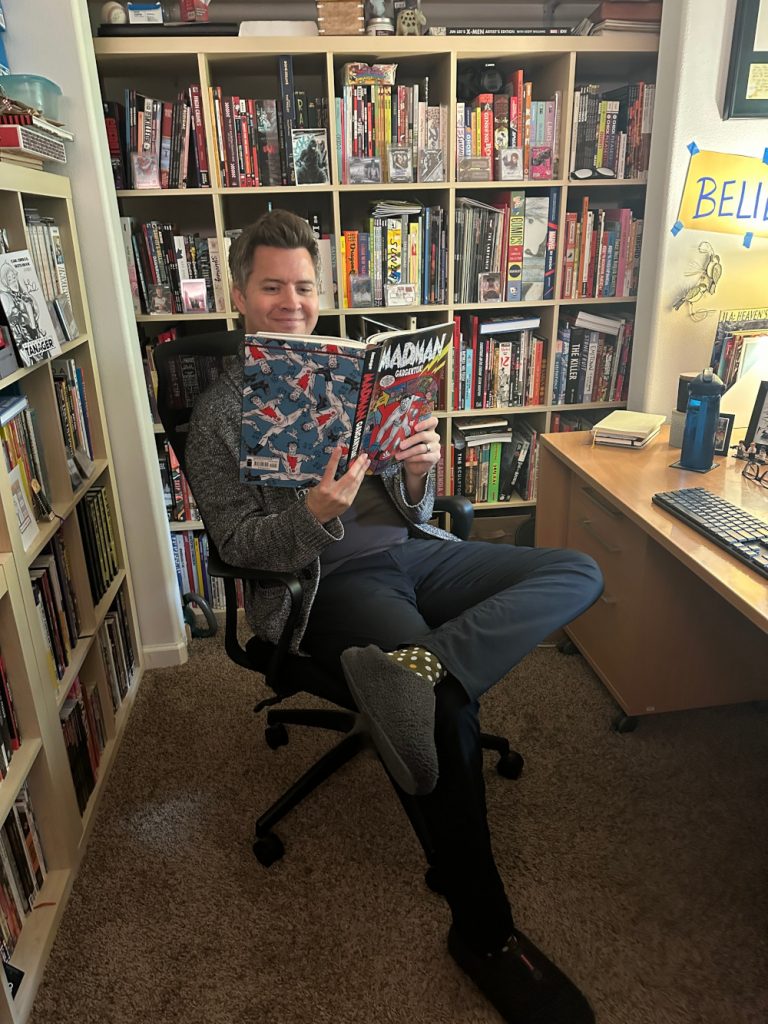The Format Boom is On, So Let’s Power Rank Comic Book Formats
As has been noted many times here on SKTCHD, the format boom is in fact on — and it only continues to accelerate. Direct market publishers are embracing all kinds of shapes and sizes of comic collections, with the classic comic book and trade paperback formats earning all kinds of friends in the form of digests, compendiums, omnibi, and basically anything else you can think of. It makes sense, of course. Publishers have significant material to work with from their respective histories, and finding new ways to package it allows them to make further inroads with bookstores, comic shops, and readers alike. As far as comic trends go, it’s a slam dunk, and one that offers plenty of opportunity for everyone involved.
But with so many formats to choose from, we’ve actually reached a point where we have to do just that: make choices. Should I get this book as an omnibus? A monstrous hardcover? A smaller hardcover? A digest? A plain ol’ comic book? Some weird shape or size I haven’t seen or imagined yet? Because of that, the questions that face us have extended beyond just, “Should I read this?” to “Which format should I read it in?” Now, offering consumers choices is rarely a problem. It certainly isn’t here. This is a win for everyone. But it does introduce another important question to consider.
“Which format is the best?”
That’s what we’re here to answer today, as I’ll be power ranking comic formats to give at least one person’s take on the most preferred flavors available to readers today.

Now, as is always the case with these kinds of exercises, I had to establish some ground rules to ensure that I judged everything fairly and so you all knew what guided me as I determined these rankings. This was important to do, as it’s the only way to fairly do this type of thing. So, let’s get to the rules:
- Only print comics were considered, because that’s what the focus is here. This is no slander to webcomics or Instagram strips or anything like that. It’s just not the point.
- We’re only considering formats widely available in America, because that’s where I am located. Apologies to bandes dessinées in particular. I wish those Franco-Belgian comics were a factor here too.
- Graphic novels are not distinguished as a separate entity here. Consider them part of whichever format they are the most closely associated with from the options within (i.e. Craig Thompson’s Blankets would be most similar to a compendium and Raina Telgemeier and Scott McCloud’s The Cartoonists Club is closest to a digest in trim size).
- The number one determinant for this ranking is readability. The easier/better the reading experience, the higher the ranking.
- Other key factors are aesthetic appeal and cost/benefit analysis, but those are secondary to readability.
- Never to be ignored: I will use my own preferences as a tiebreaker if necessary.
That’s it. Those are the factors that guided me in this dangerous game of power ranking varying comic formats. So, let’s get to the hard work of determining which ones led the pack and which lagged behind, as I rank an assortment of comic formats from last to first.

13. Omnibuses…Omnibi…Whatever the Plural Form of an Omnibus is
How Would You Describe It: Expensive home gym equipment designed for the purpose of reading something poorly.
Upside: It collects a lot of material in one place. Its resell value tends to be higher than other formats. Offers you a weapon if an invader enters your home.
Downside: It may literally kill you. It’s hard to read. It’s very expensive. It can be hard to find and is always out of print seemingly.
Overall Take: I am very much on the record about my distaste for the omnibus format. It is a nonsense way to present comic books. It’s too big, too heavy, and too difficult to read. Pair all that with its high cost and its rise as a collector desired format — something that ensures people will chase after them, which results in even higher costs because sometimes the secondary market becomes the only available one — and you have a format with many downsides and few upsides. Sure, it collects a lot of material, but it’s harder to read than others that do the same. This is the only format I dislike. The rest are cool in my book.
My theory about why the omnibus format has become popular is because it’s a showpiece. It has a massive spine that displays nicely on a bookshelf, which looks good in photos and in your own collection. But from a readability standpoint, it is undeniably the worst of the lot.

12. Comic Book — Magazine Format
How Would You Describe It: A magazine, but for comics.
Upside: The sheer size of these allows for interesting storytelling choices and greater density of material. Often produced quite nicely. Always comes with a nice spine!
Downside: Higher price point. Oddly seems more fragile than regular comics. Where am I going to put this thing?
Overall Take: This format works for me sometimes, like with the upcoming White House Robot Romance #1 from Chip Zdarsky and Rachael Stott from DSTLRY. It looks great, feels great, and uses the space well. But for the most part, I find that I like this format in theory more than actuality. It’s a bit unwieldy, the softcover nature and its thin stature results in a format that’s bent easily, and it’s genuinely difficult to find good storage options for. It’s not bad as much as it is problematic, and its readability has a high ceiling when the creative team uses the space well. But that isn’t a constant by any means.
For all those flaws, here’s the funny thing about this format: It works very well as a collection! As just one example, the DSTLRY hardcover collections are tremendous. The hardcover format and the added density results in a sturdier product that’s similar to bandes dessinées. That’s great. So, I like the shape. I just don’t like this specific iteration of it, and certainly not as much as I expected when it first entered into recent prominence with DC Black Label.
And it’s worth noting that DC has, at least as far as I can tell, abandoned this format. That seems meaningful!

11. Beefy Hardcover
How Would You Describe It: A bigger, higher end collection that exists somewhere between a regular hardcover and omnibus in size. Think 15+ issues instead of 6 to 12.
Upside: Typically a lovely production. Collects more story in one place without falling into the pit of being a potential weapon. Looks nice on a coffee table.
Downside: With great page count comes greater price point. Still pretty unwieldy.
Overall Take: I love a good hardcover, as we’ll get to soon enough. But at a certain point, the size these collections take on can become a bit prohibitive to your overall reading experience. It doesn’t even have to be the preposterous levels presented by an omnibus. I’ve found that by the time a collection enters the 15+ issue range, it becomes a challenge to read with clarity and without loss of art to the spine.
That’s where this species of tome resides, a variant of a familiar format that I have labeled the “Beefy Hardcover.” We’ve all seen these before. They’re not quite an omnibus but certainly more than a typical hardcover release. And while that often comes with excellent production work and backmatter — both of which I love — it’s just less satisfying than I’d prefer from a readability standpoint, which is why it finishes here rather than higher up.
subscribers only.
Learn more about what you get with a subscription
